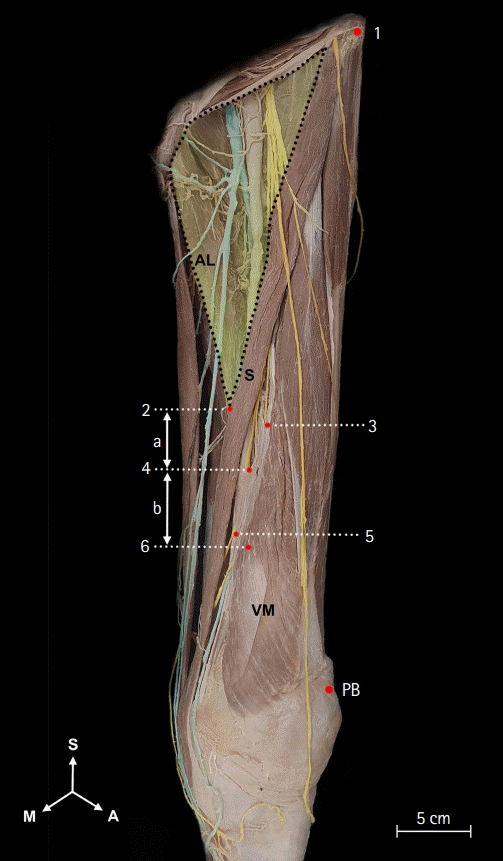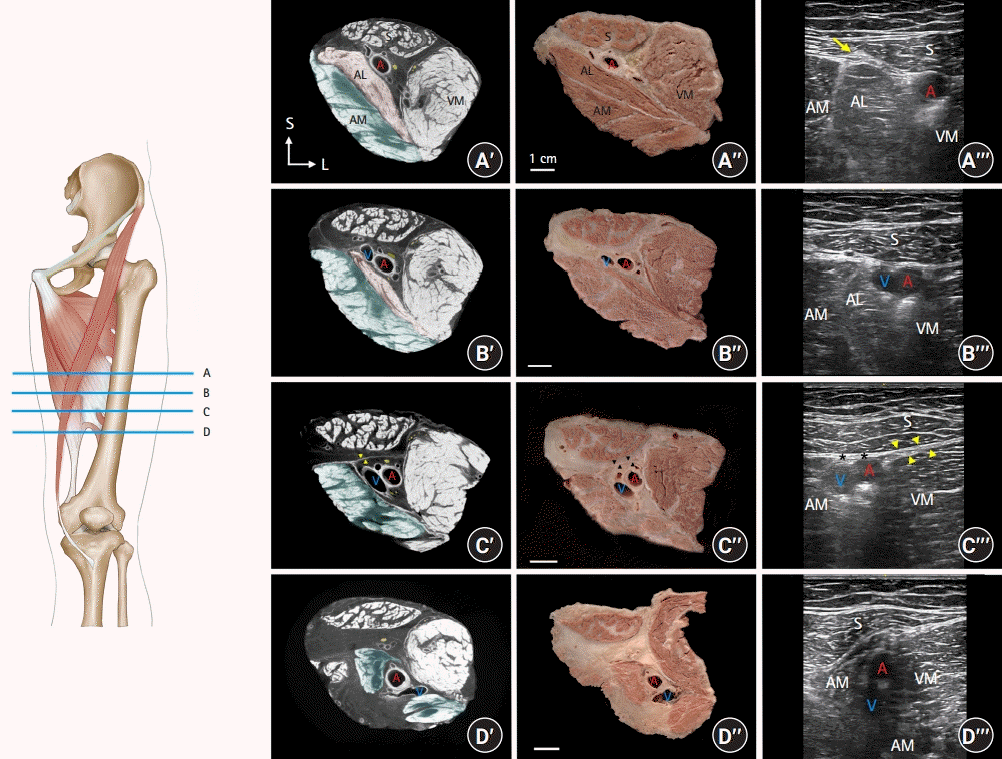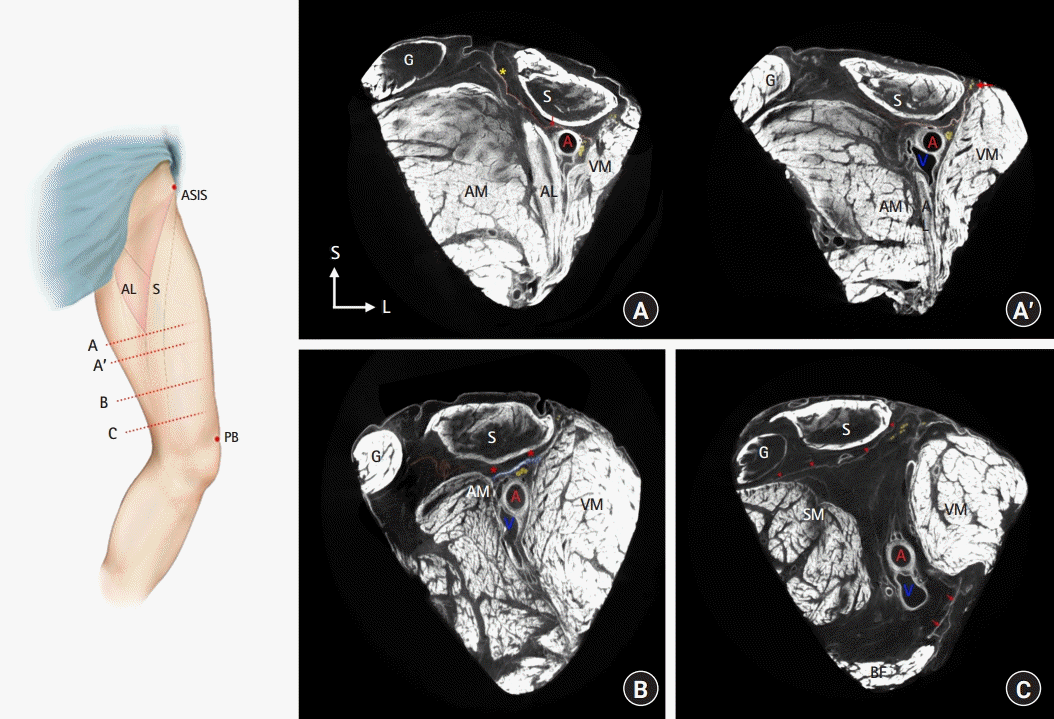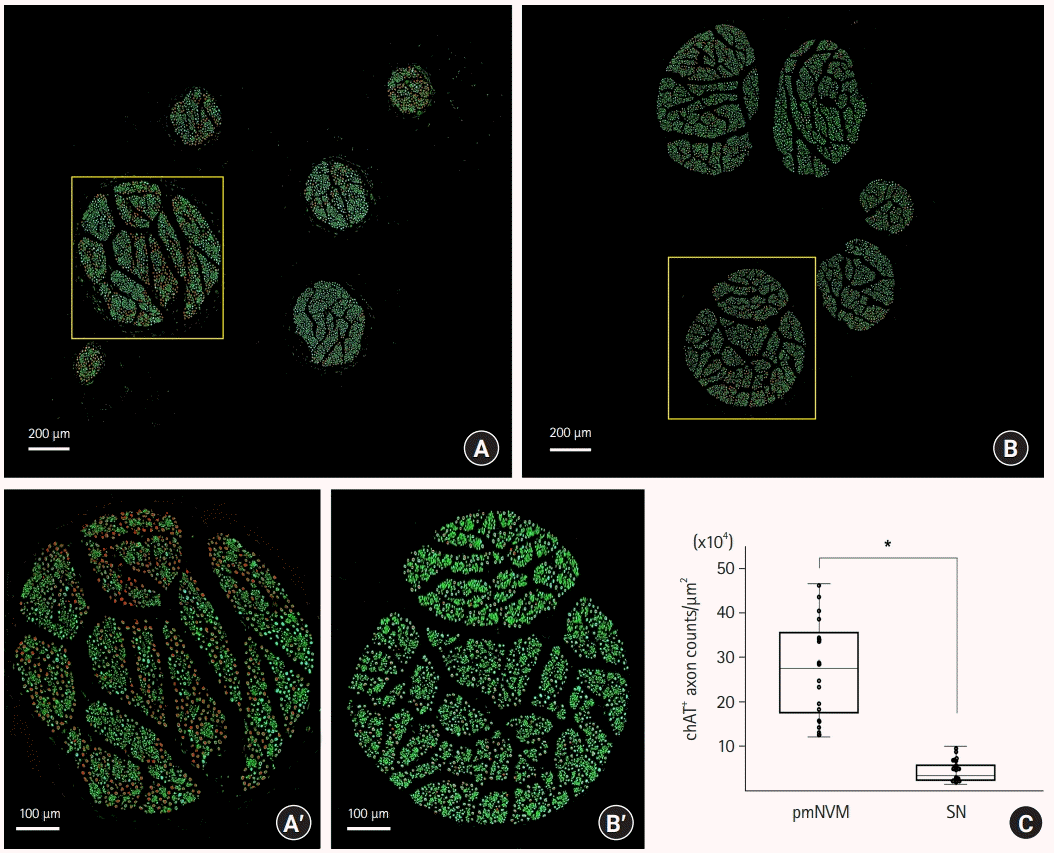1. Uhl JF, Gillot C. Anatomy of the Hunter’s canal and its role in the venous outlet syndrome of the lower limb. Phlebology. 2015; 30:604–11.
2. Tubbs RS, Loukas M, Shoja MM, Apaydin N, Oakes WJ, Salter EG. Anatomy and potential clinical significance of the vastoadductor membrane. Surg Radiol Anat. 2007; 29:569–73.
3. Elazab EE. Morphological study and relations of the fascia vasto-adductoria. Surg Radiol Anat. 2017; 39:1085–95.
4. Bendtsen TF, Moriggl B, Chan V, Børglum J. Basic topography of the saphenous nerve in the femoral triangle and the adductor canal. Reg Anesth Pain Med. 2015; 40:391–2.
5. Chin KJ, Versyck B, Elsharkawy H, Rojas Gomez MF, Sala-Blanch X, Reina MA. Anatomical basis of fascial plane blocks. Reg Anesth Pain Med. 2021; 46:581–99.
6. Lee B, Park SJ, Park KK, Kim HJ, Lee YS, Choi YS. Optimal location for continuous catheter analgesia among the femoral triangle, proximal, or distal adductor canal after total knee arthroplasty: a randomized double-blind controlled trial. Reg Anesth Pain Med. 2022; 47:353–8.
7. Vora MU, Nicholas TA, Kassel CA, Grant SA. Adductor canal block for knee surgical procedures: review article. J Clin Anesth. 2016; 35:295–303.
8. Jæger P, Jenstrup MT, Lund J, Siersma V, Brøndum V, Hilsted KL, et al. Optimal volume of local anaesthetic for adductor canal block: using the continual reassessment method to estimate ED95. Br J Anaesth. 2015; 115:920–6.
9. Bendtsen TF, Moriggl B, Chan V, Børglum J. The optimal analgesic block for total knee arthroplasty. Reg Anesth Pain Med. 2016; 41:711–9.
10. Runge C, Moriggl B, Børglum J, Bendtsen TF. The spread of ultrasound-guided injectate from the adductor canal to the genicular branch of the posterior obturator nerve and the popliteal plexus: a cadaveric study. Reg Anesth Pain Med. 2017; 42:725–30.
11. Tran J, Chan VW, Peng PW, Agur AM. Evaluation of the proximal adductor canal block injectate spread: a cadaveric study. Reg Anesth Pain Med 2019. Advance Access published on Dec 25, 2019. doi: 10.1136/rapm-2019-101091.
12. Tran J, Peng PW, Lam K, Baig E, Agur AM, Gofeld M. Anatomical study of the innervation of anterior knee joint capsule: implication for image-guided intervention. Reg Anesth Pain Med. 2018; 43:407–14.
13. Gesslbauer B, Hruby LA, Roche AD, Farina D, Blumer R, Aszmann OC. Axonal components of nerves innervating the human arm. Ann Neurol. 2017; 82:396–408.
14. Wong WY, Bjørn S, Strid JM, Børglum J, Bendtsen TF. Defining the location of the adductor canal using ultrasound. Reg Anesth Pain Med. 2017; 42:241–5.
15. Burckett-St Laurant D, Peng P, Girón Arango L, Niazi AU, Chan VW, Agur A, et al. The nerves of the adductor canal and the innervation of the knee: an anatomic study. Reg Anesth Pain Med. 2016; 41:321–7.
16. Thiranagama R. Nerve supply of the human vastus medialis muscle. J Anat. 1990; 170:193–8.
17. Nada E, Elmansoury A, Elkassabany N, Whitney ER. Location of the entry point of the muscular branch of the nerve to vastus medialis. Br J Anaesth. 2021; 127:e58–60.









 PDF
PDF Citation
Citation Print
Print




 XML Download
XML Download